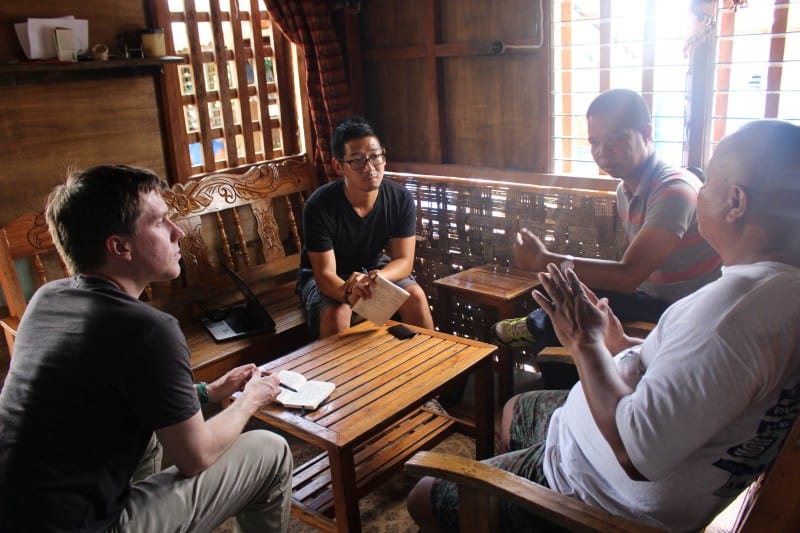“Empathy is about standing in someone else’s shoes, feeling with his or her heart, seeing with his or her eyes. Not only is empathy hard to outsource and automate, but it makes the world a better place.”
Daniel H. Pink
I waited in an ER for an hour one time. Not as a patient, but as an observer. I wanted to understand the experience of the ER because I was working with a hospital trying to reduce ER wait times. That one hour of sit-and-observe empathy, along with a colleague doing the same thing at a different location, led to five distinct pain points identified in a brainstorming session the next day.
In my last post I talked about asking the right question at the start of digital innovation, whether it’s about scaling up a program with a digital platform or imaging a whole new offering that will involve a core digital tool.
Now, let’s talk about why empathy is the next step in a healthy digital innovation process.
We call the people experiencing the problem at hand touchpoints, a term that encompasses traditional “internal and external stakeholders” but is also welcoming of broader empathy via surveys, conversations, and informal observation. Touchpoints are points of empathetic touch critical to validating assumptions we hold, confirming hunches we have, and generally keeping us focused on human people rather than tech features throughout the digital innovation process.
Because if we don’t, we could come up with the wrong answer to the right question; or we could become enamored of cool tech rather than focused on the best user experience.
For example, right now we’re reimagining a service offered by one of our partners as a turnkey product. What they do is identify potential funding sources based on a proprietary research and scoring process. In our first Drawing Board session we dedicated 20 minutes to brainstorming different types of people that would make up a well-rounded touchpoint group, from nonprofits to funders to staff members. We brainstormed people across two spectrums:
- Engagement (from unengaged with the current service to deeply engaged) and
- Demographics (small to large orgs, near and far orgs, young and old orgs).
We now have about 15 people on a list, plus those I’ll brush shoulders with informally (see “Gorilla Empathy” below).
Focus on Pain Points
As you speak with touchpoints, focus on the acute pain points they’re experiencing. Understand what is causing them real pain, because real pain presents an opportunity to create a painkiller. For example, with this same partner we’ve identified that staff have a lot of pain just managing the documentation process for this service they offer. Therefore, our hunch is strengthened that an interface to streamline workflow could alleviate that pain and help the service become more turnkey (which is the core of our problem statement).
The more touchpoints you touch, the more pain points you’ll identify and confirm, which map to stronger hunches and clearer opportunities. Subsequent conversations around what features should and shouldn’t be designed for your digital innovation become that much clearer, de-risking the often large investment you’re about to make.
Empathy Doesn’t Have to Break the Bank
Most of our partners have limited time and resources. Heck, don’t we all? That’s why we’ve crafted a four-week process we call the Workshop Phase, and the cornerstone of that process is empathy with touchpoints. By timeboxing the empathy process, we force ourselves to get creative and use a mix of tools to accomplish initial validation. Here are just a few:
- Surveys. Sending web/social media surveys to current users/customers asking about key hunches and assumptions.
- Observation. Choose a time and place to just sit and observe the problem as it’s happening (like my “visit” to the ER).
- Visits. Spend an hour in the home or other familiar-to-them place of a touchpoint. Chat with them. Ideate with them. You’ll get a well-rounded view of a few real people and their acute pain points.
- Googling. Mine existing research touching on issues relevant to the problem statement.
- Interviews. Attend an event or meetup where a large number of people experiencing the problem are already going to be and which affords you the opportunity to have a handful of conversations in very little time. I attend Impact & Coffee and 1 Million Cups, often getting in three or four “lightning interviews” regarding a problem we’re working on in the process.
When you have a dedicated team, a great list of touchpoints, and some strong hunches about the digital innovation you think is going to be a huge lever for solving a problem, you’ll be amazed the quality of empathy you’ll soak up in just two or three weeks as you move from idea to visualized concept.
And you’ll be chomping at the bit to develop some rapid prototypes that put those strong concepts to the test.

